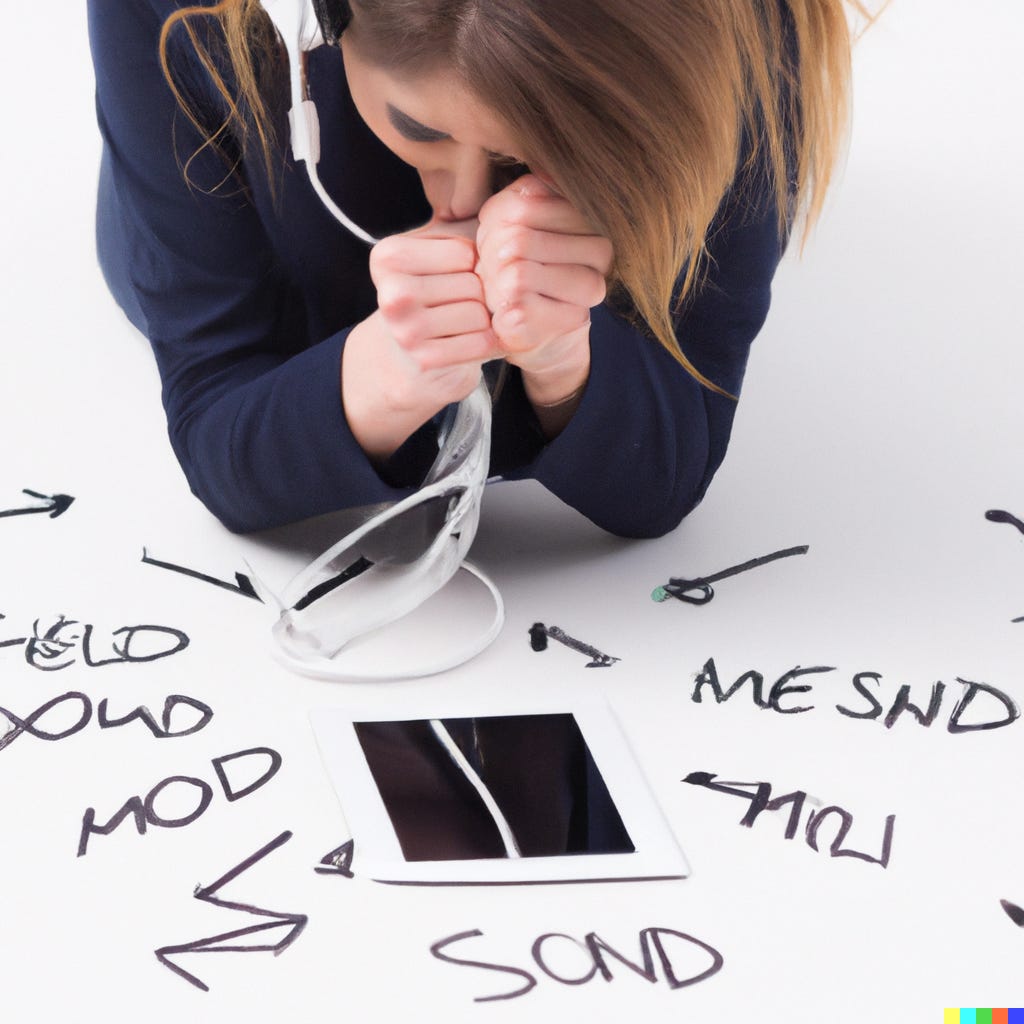New Media is Rewiring Our Brains in Real-Time. What Does That Mean for Kids, Society, Civilization?
- Tuesday, 09 May 2023 16:03
- Last Updated: Wednesday, 16 August 2023 20:58
- Published: Tuesday, 09 May 2023 16:03
- Hits: 2050

Technology has become an integral and indisputably addictive aspect of our culture and society, particularly for teenagers and children. As President of the sports tech company GameChanger, Scarsdale resident Sameer Ahuja has much to say about kids and technology. GameChanger's mobile apps are used in all 50 states by millions of youth sports coaches, fans, and athletes to score, stream, and watched by over 6 million youth sports games a year. As a Trustee on the Scarsdale Village Board and a parent himself, Ahuja has some insights into the addictive nature of social media and its effects on children and teenagers.
He writes a newsletter, Consume at Once, that discusses how technology is transforming how we create and consume movies, videos, TV, games, sports, and social media. He recently wrote the following article: New Media is Rewiring our Brains in Real-Time. What Does That Mean for Kids, Society, Civilization which he shares below.
Anyone need a dopamine fix?
Having trouble concentrating? Easily bored? Distracted? Do you suffer from heightened anxiety? Memory issues? You may want to blame your smartphone. You know, that indispensable device we now look at 96 times a day.
While there are a lot of pluses about navigating life with a phone by your side—right now, you may be reading this very article on one—downsides abound. Significant ones. Recent research shows popular apps like Instagram and Reddit have been linked to a range of cognitive and emotional ills.
But that’s just the tip of the iceberg. If these researchers are correct, social media, video games, and other digital media are literally rewiring our brains.
How can skimming Twitter or playing Candy Crush change our brains? The answer is such applications leverage a biological phenomenon known as neuroplasticity. This concerns the brain’s ability to change its internal structure in reaction to new experiences.
Ever wonder why kids can learn language, play instruments, or grasp concepts far faster than adults? Young brains are especially plastic. As we age our plasticity wanes. We get stuck in our ways.
What’s more, the brain’s plasticity can be affected by physical trauma, drug use, or through powerful, persistent sensory stimulation. (Like playing VR games via a Meta Quest 2 headset for hours daily.)
The links between such digital usage and changes in cognitive function are real—and concerning. A 2014 study published in the journal PLOS ONE found people who frequently used social media had a thinner corpus callosum. This is the part of the brain that connects the left and right hemispheres.
The researchers suspect such a change may be due to the fragmented, less integrated way such media can be experienced. Other studies have shown that frequent social media use actually shrinks the part of the brain associated with concentration, leading to shorter attention spans.
But there’s another troubling mental health concern.
A growing number of psychologists now fear digital media may be impacting our social and emotional skills. A 2018 study published by Guilford Press Periodicals shows regular social media use can lead to feelings of isolation and depression. The researchers believe social media encourages social comparisons, producing emotions like inadequacy or insecurity.
Fortunately, they found limiting such exposure can produce positive outcomes. Our inherent plasticity allows us to bounce back. Even so, effects of social media, video games, and other digital media have been likened to those caused by addictive drugs and activities like gambling, both of which are known to literally rewire the brain. It all comes down to the neurotransmitter dopamine, a chemical that allows the brain to recognize pleasure.
Whatever the source of that pleasure—whether it’s a fine wine, sex, a funny cat video, or a recognizable reward—it causes part of the inner brain called the nucleus accumbens to release this powerful neurotransmitter. The chemical then reinforces those neural pathways associated with the activity that triggered its release. The faster and more frequent the dopamine release, the stronger these neural pathways become.
This is how addiction is achieved.
Certainly, everyone from neuroscientists to casino operators have long recognized the link between frequent (but unpredictable) rewards and addictive behavior. This is why most games of chance—particularly slot machines—offer small but frequent “wins” to players.
It keeps them hooked, unaware they’re actually losing.
The link between digital media and addiction is also no accident. From 20th century video games like Space Invaders and Pac-Man to 21st century social media platforms like TikTok, digital media creators have tapped into the brain’s natural plasticity by using sounds, rapidly changing images, and low-stakes “rewards” (e.g., “badges,” “gold coins,” “Likes,” “Shares,” etc.) to trigger dopamine release, reinforcing engagement behavior.
The more you play, the more you want to play.
For advertising-based platforms like Facebook, YouTube, Instagram, etc., attracting and, more importantly, keeping you engaged is key to their business model. Part of this is achieved through the low-stakes reward system of “Likes” and “Shares” described above.
But there’s another way to trigger dopamine release, and thus encourage addiction: creating outrage. As neurologists have discovered, anger triggers the primitive “fight or flight” response, which also happens to produce the release of dopamine.
And as social media algorithm designers have discovered, the angrier visitors become, the more likely they are to stay. Like rewards, outrage sells. Thus, once you click on a story or thread that angers you, the algorithm will feed you more of the same until it’s virtually all you consume.
As with any addiction, the first step in recovery from digital media overload is recognizing the problem. Now that we better understand how we may be being manipulated, we can more easily see the triggers, identify our own reactions, and work to overcome bad tendencies.
We can take back our minds.
Ironically, we can also use technology to help ward off tech addiction. Already, there are apps to help you track phone usage and warn you when you’ve reached a self-imposed daily limit. These platforms can also provide feedback on how much time you spend on various activities, helping you become more aware of your habits and able to make changes accordingly. Similarly, some apps even provide rewards or incentives if you successfully limit your screen time or reach specific goals, encouraging healthy habits.
There are also myriad mindfulness and meditation apps available, as well as mediation videos available free on YouTube. All this content can help you manage stress and anxiety, which can contribute to addictive behaviors, enabling you to better manage your emotions and develop a more self-conscious approach to technology usage.
Perhaps most powerful, is can technology be used to trigger the release of say oxytocin, known as the love hormone? Oxytocin is known to be associated with longer-term happiness. It can often be triggered by physical contact, listening to music, being in nature, getting exercise. Just because it hasn’t been done yet, does not mean it cannot. The global Silicon Valley specializes in disruption. Let’s disrupt dopamine!
Beyond using tech to retrain our minds, what’s also needed in the modern era is the cultivation of balance. One of the greatest minds of Western Culture himself, Aristotle championed equilibrium—way back in Antiquity. The profound Greek philosopher saw its cultivation to be a hallmark of a well-lived life.
He’s also known for saying in Metaphysics, “It is the mark of an educated mind to be able to entertain a thought without accepting it.”
 Sameer AhujaLearning from this example, might we consider a similar approach with the new media threatening to affect our cognition? Very much so. Just as mystics suggest being in this world—but not of this world—we can consciously decide to do something similar: Use our marvelous technologies competing for our attention—without allowing such usage to empower us.
Sameer AhujaLearning from this example, might we consider a similar approach with the new media threatening to affect our cognition? Very much so. Just as mystics suggest being in this world—but not of this world—we can consciously decide to do something similar: Use our marvelous technologies competing for our attention—without allowing such usage to empower us.
A tall order, I am aware.
But it’s vital we make such bold statements at the dawn of such an unprecedented time. The consequences could well be our ability to understand and interpret reality in our brave new world.
See more articles by Sameer Ahuja on his newsletter, Consume at Once.










